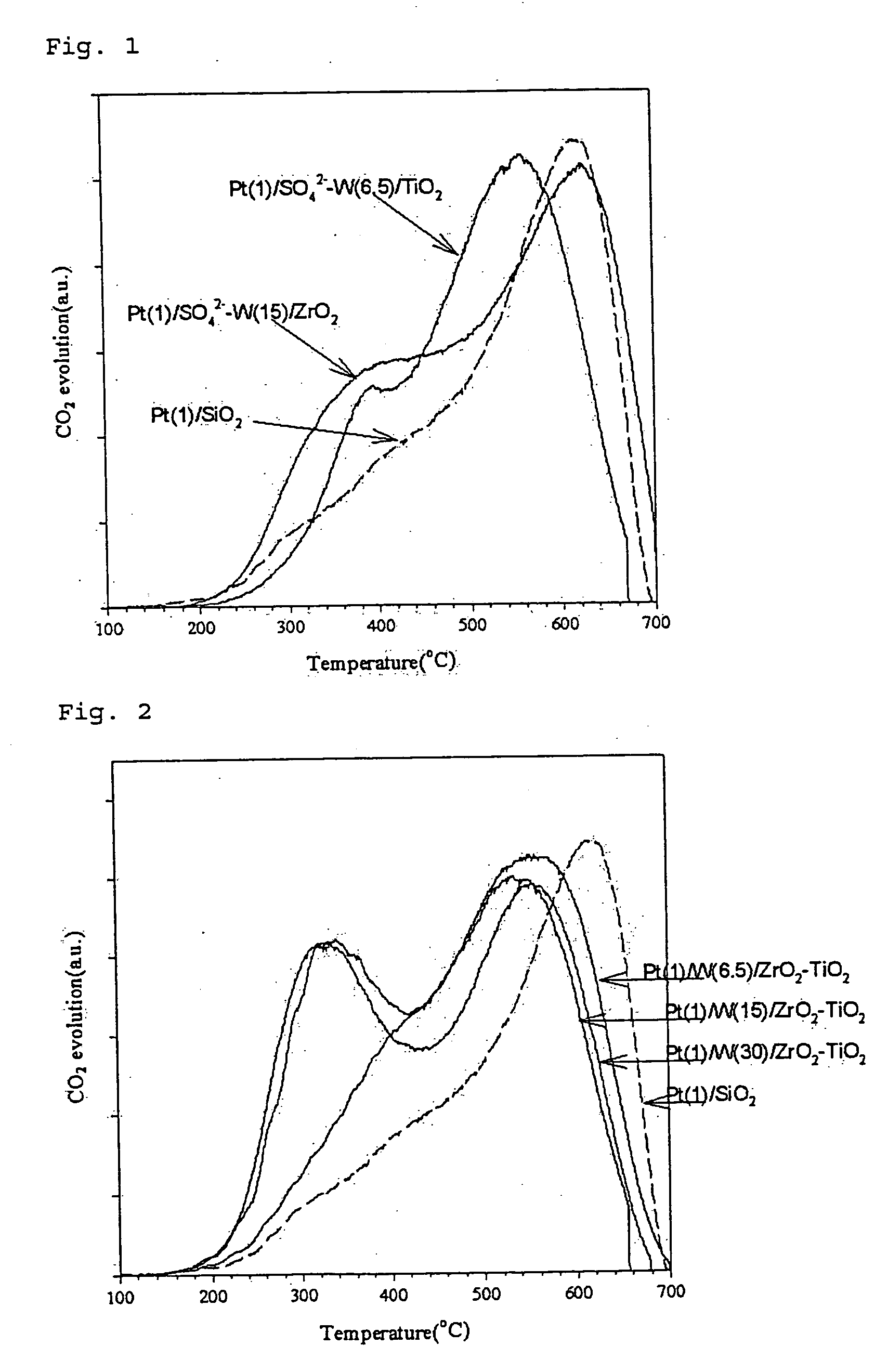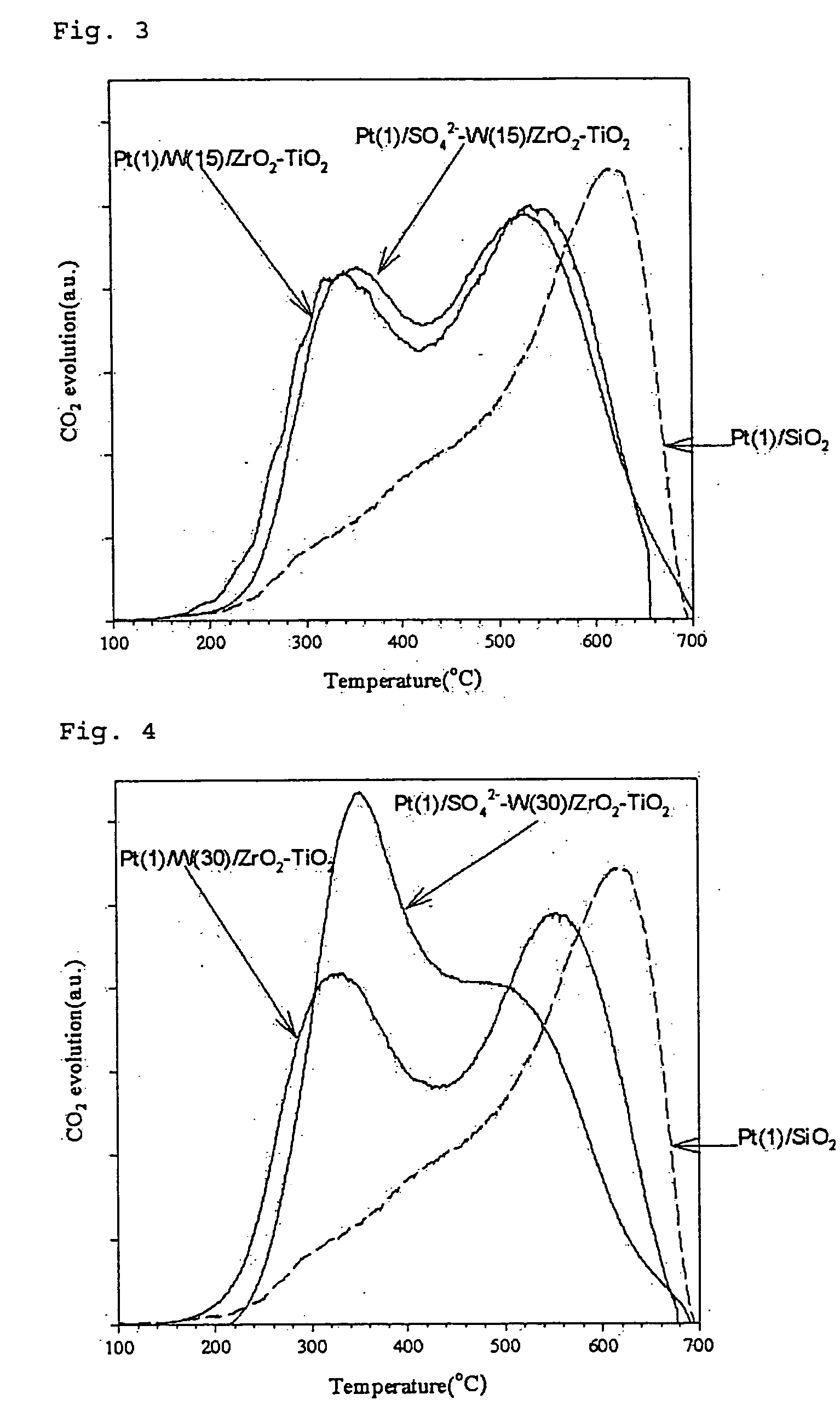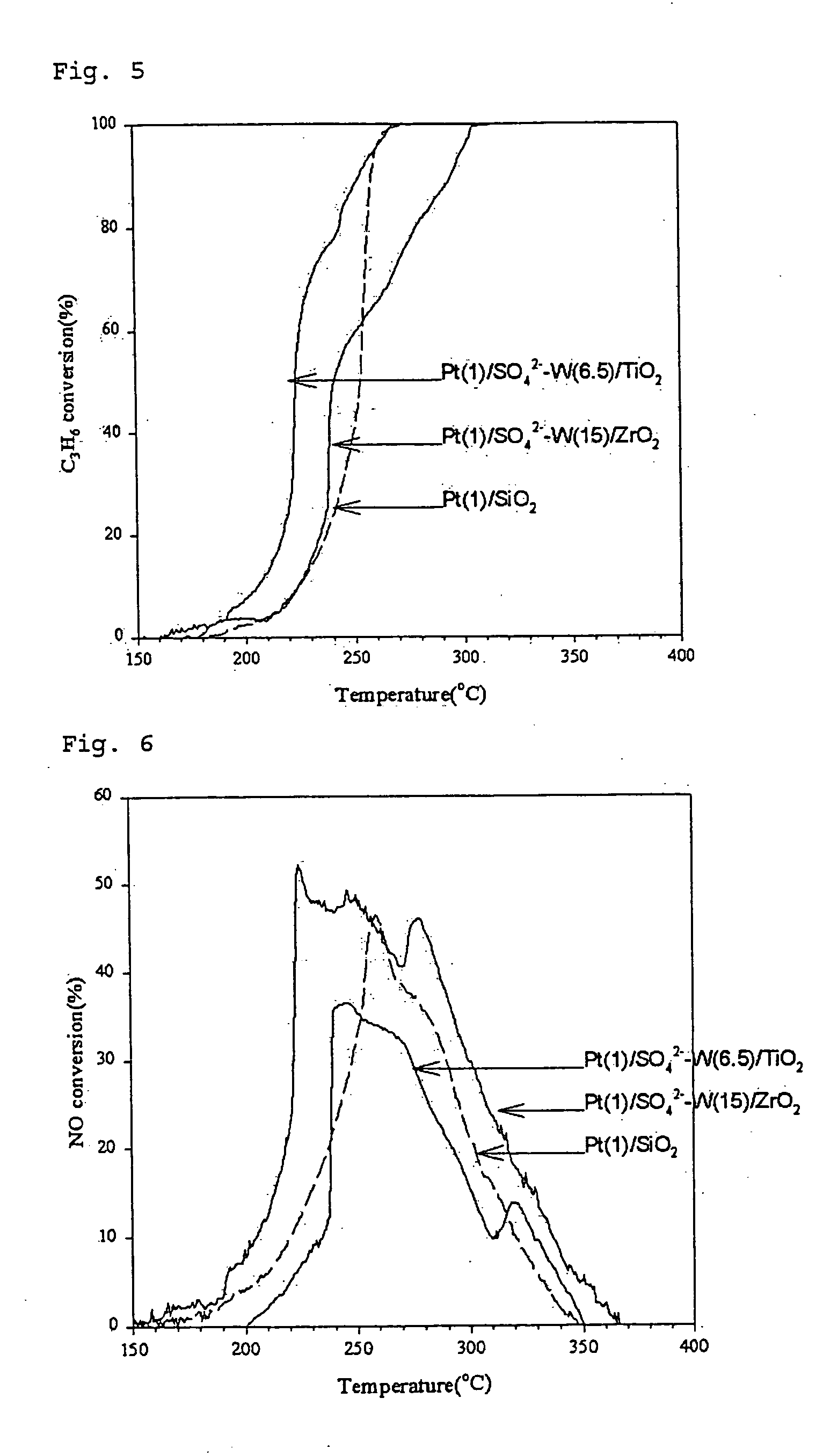Catalyst for purification of diesel engine exhaust gas
a technology for diesel engines and catalysts, applied in the direction of catalyst activation/preparation, metal/metal-oxide/metal-hydroxide catalysts, machines/engines, etc., can solve the problems of inability to provide any reasonable explanation, no consistent tendency between the use of sulfate forms and catalytic activity, and serious health problems for the population at large. , to achieve the effect of improving the acidity of sulfur-resistant refractory oxides, improving the oxid
- Summary
- Abstract
- Description
- Claims
- Application Information
AI Technical Summary
Benefits of technology
Problems solved by technology
Method used
Image
Examples
preparation example 1
Preparation of the Catalyst by Using Zirconia-Titania Composite Oxide Containing Tungsten Oxide (Pt / WO3 / ZrO2—TiO2)
[0113] (1) Preparation of Zirconium-Titanium Mixed Gel
[0114] In 700 ml of ethanol were dissolved zirconium propoxide (Zr(OC3H8)4) and titanium propoxide (Ti(OC3H8)4) in an amount of 0.5 mol each under stirring to prepare an homogeneous solution. To this solution, an aqueous ammonia solution was added dropwise under stirring to co-precipitate Zr(OH)4 and Ti(OH)4 and form a gel, which was filtered, washed several times with distilled water, dried at about 110° C. for 12 hours to obtain a zirconium-titanium mixed gel [Zr (OH)4—Ti (OH)4].
[0115] (2) Loading of Tungsten
[0116] To 4 g of zirconium-titanium mixed gel [Zr(OH)4—Ti(OH)4] obtained above was added each solution prepared by dissolving 0.273 g, 0.693 g and 1.68 g, respectively, of ammonium metatungstate [(NH4)6W12O39] in 4 ml of distilled water, which was absorbed into the gel by gradually removing the solvent (inci...
preparation example 2
Preparation of the Catalyst by Using Zirconia-Titania Composite Oxide Containing Tungsten Oxide and Sulfuric Acid (Pt / SO42−—WO3 / ZrO2—TiO2)
[0122] (1) Preparation of Mixed Gel and Loading of Tungsten
[0123] Aqueous solutions were prepared by dissolving 0.693 g and 1.68 g of ammonium metatungstate (NH4)6W12O39 in 4 ml of 1M sulfuric acid (H2SO4) instead of distilled water. Thus obtained tungsten precursor solution containing sulfuric acid was added to the zirconium-titanium mixed gel obtained in the above Preparation Example 1 (1) and was absorbed into the gel by gradually removing the solvent (incipient wetness method). The resulted mixture was dried at 110° C. for 12 hours and was subjected to oxidation at 700° C. for 3 hours.
[0124] The carriers obtained as above contain tungsten in the amount of 15% and 30% by weight, respectively, based on the total weight of the carrier. The content of sulfuric acid thereof is approximately from 1 to 5% by weight.
[0125] The carriers thus obtain...
preparation example 3
Preparation of the Catalyst by Using Titania Containing Tungsten Oxide and Sulfuric Acid (Pt / SO42−—WO3 / TiO2)
[0128] According to the same procedure as in Preparation Example 1, a titania gel was prepared. To 4 g of thus obtained gel was added an aqueous solution prepared by dissolving 0.273 g of ammonium metatungstate in 4 ml of 1M sulfuric acid solution, which was absorbed into the gel by gradually removing the solvent to obtain a titania carrier containing 6.5% by weight of tungsten and sulfuric acid. On the titania carrier thus obtained, platinum was deposited to obtain a catalyst [Pt(1) / SO42−—W(6.5) / TiO2], which contained 1% by weight of platinum deposited thereon and 6.5% by weight of tungsten.
PUM
| Property | Measurement | Unit |
|---|---|---|
| particle size | aaaaa | aaaaa |
| temperature | aaaaa | aaaaa |
| temperature | aaaaa | aaaaa |
Abstract
Description
Claims
Application Information
 Login to view more
Login to view more - R&D Engineer
- R&D Manager
- IP Professional
- Industry Leading Data Capabilities
- Powerful AI technology
- Patent DNA Extraction
Browse by: Latest US Patents, China's latest patents, Technical Efficacy Thesaurus, Application Domain, Technology Topic.
© 2024 PatSnap. All rights reserved.Legal|Privacy policy|Modern Slavery Act Transparency Statement|Sitemap



